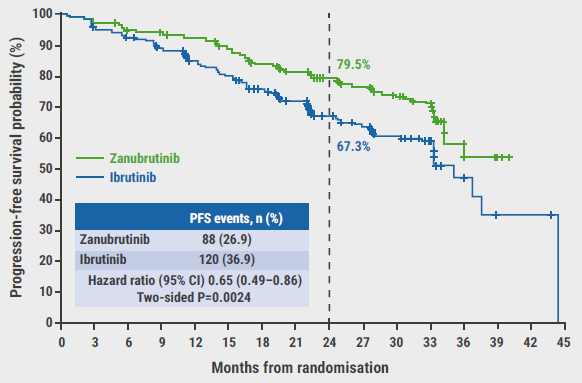The median duration from starting PARP-inhibitor therapy to receiving a diagnosis of myelodysplastic syndrome or AML was about 18 months, Dr. Pierre-Marie Morice of Cancer Center Francoise Baclesse in Caen, France, and colleagues report in The Lancet Haematology.
"The great clinical benefit provided by these therapies (particularly in patients with ovarian cancers) combined with their growing use in other type of cancer requires careful monitoring," Dr. Morice, the study's first author, told Reuters Health by email.
The U.S. Food and Drug Administration and the European Medicines Agency approved four PARP inhibitors in 2014-2018, Dr. Morice and his team note. They may be prescribed to patients with ovarian, breast, pancreatic or prostate cancer.
Adverse events including fatigue and hematological and gastroenterological toxicities were reported in clinical trials, usually during the first three months of therapy, while a few cases of myelodysplastic syndrome and AML were also reported, the authors add.
To better characterize the risk and clinical profile of myelodysplastic syndrome and AML in patients on PARP inhibitors, the authors reviewed 28 randomized controlled trials including 5,693 patients who received PARP inhibitors and 3,406 controls.
In the 18 trials with placebo-control groups, PARP inhibitors were associated with a significantly increased risk of myelodysplastic syndrome and AML (Peto odds ratio, 2.63; P=0.026). Among patients on PARP inhibitors, the incidence of myelodysplastic syndrome or AML was 0.73%, versus 0.47% for placebo patients.
The authors also reviewed data from VigiBase, the World Health Organization's pharmacovigilance database, on 99 patients with myelodysplastic syndrome and 79 with AML related to PARP inhibitors.
Median treatment duration was 9.8 months and median time from initial PARP-inhibitor exposure to diagnosis of myelodysplastic syndrome was 17.8 months, while time to AML diagnosis was 20.6 months. Outcomes were available for 104 cases, 47 of whom (45%) died.
"PARP inhibitors increase the risk of MDS and AML. The overall risk is small, however, these complications can arise at any time after treatment initiation even after brief drug exposure. This is counter to the common discussion about MDS/AML being late toxicities," Dr. Anna V. Tinker of the University of British Columbia in Vancouver, Canada, told Reuters Health by email. Dr. Tinker wrote a comment accompanying the study.
"Physicians will continue to prescribe PARP inhibitors, as the benefits for the treatment of cancer outweigh the risks of MDS/AML. The results of this study will not change practice but they do dispel uncertainty about the role of PARR inhibitors in causing MDS/AML," she added.
"However, readers of the study should take note that despite the significant effort taken by the researcher team to identify and characterize all cases of MDS/AML, the overall number of identified cases (from the trials and the pharmacovigilance database) remains relatively small. More time and better data will be needed, and I would suggest that it is imperative that clinicians have a way to report the occurrence of MDS/AML on PARP-inhibitor therapy to their respective national pharmacovigilance databases or research registries to facilitate future research," Dr. Tinker concluded.
The study had no funding.
SOURCE: https://bit.ly/3hYgMxd and https://bit.ly/3oAMtyU The Lancet Haematology, online December 18, 2020.
By Anne Harding
Posted on
Previous Article
« UV-induced mutations in seemingly normal skin may predict skin cancer Next Article
Mortality higher in real-world LVAD recipients ineligible for clinical trials »
« UV-induced mutations in seemingly normal skin may predict skin cancer Next Article
Mortality higher in real-world LVAD recipients ineligible for clinical trials »
Related Articles
December 28, 2022
Should we use intensive chemotherapy prior to allo-HCT in rel/ref AML?

October 20, 2021
Some young people who undergo HCT retain ability to conceive
© 2024 Medicom Medical Publishers. All rights reserved. Terms and Conditions | Privacy Policy
HEAD OFFICE
Laarderhoogtweg 25
1101 EB Amsterdam
The Netherlands
T: +31 85 4012 560
E: publishers@medicom-publishers.com

